Going to Antarctica is a huge decision. If you’re in two minds about whether to take the polar plunge, we’ve put together 10 reasons why Antarctica should be next on your bucket list.
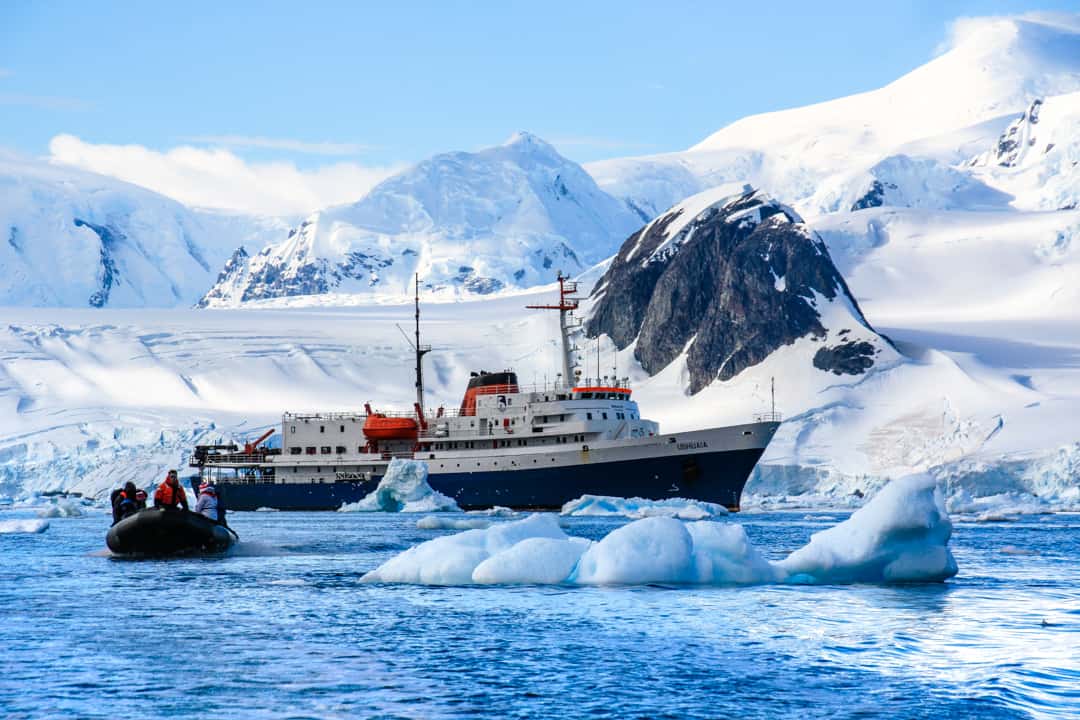
1. There Are Penguins.
Is there a better reason for going to Antarctica? Outside of the world’s zoos and the equatorial climes of the Galapagos Islands, penguins are only found in the southern hemisphere. Four penguin species live in and around Antarctica: the Emperor, Adélie, Chinstrap and Gentoo.
A trip to Antarctica is a unique opportunity to hang out with these endearingly clumsy birds, in their hundreds, and sometimes thousands, depending on the time of year.
Penguins, especially chicks, are quite curious, and while regulations require that us humans don’t go any closer than five metres, the penguins themselves don’t give a hoot for the rules, sometimes waddling over for a closer look or a wardrobe inspection.
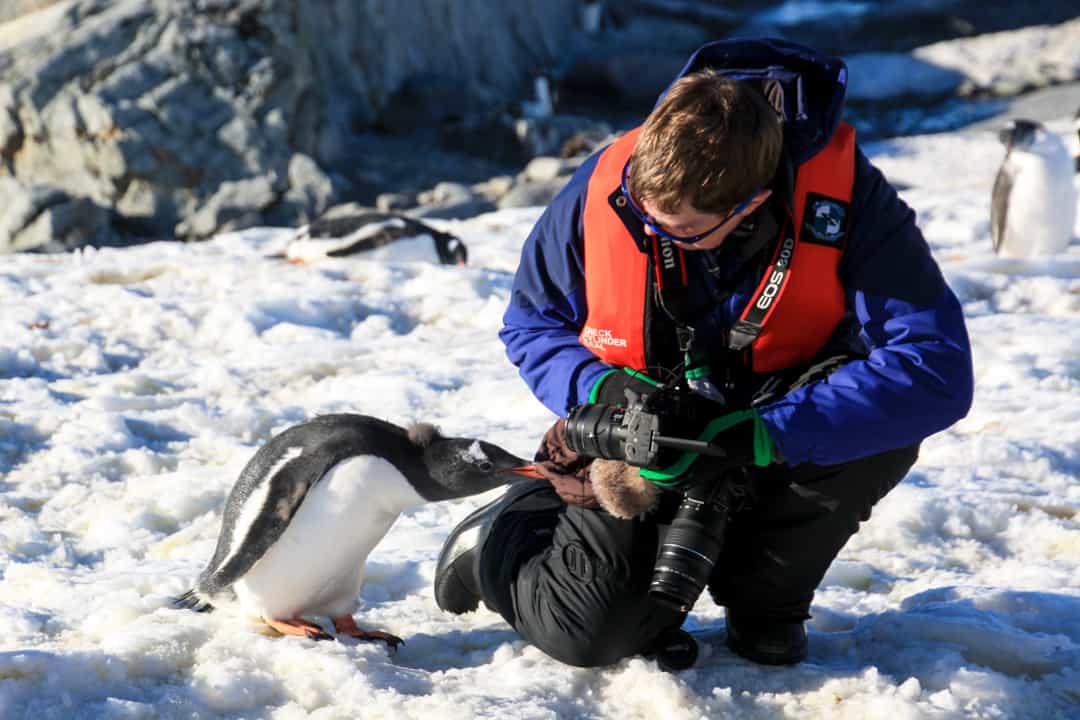
Depending on when you visit Antarctica, you’ll see penguin colonies in different stages of courtship, nest-building, breeding, hatching, feeding and moulting.
We travelled to the Antarctic Peninsula in early March, and while many of the adult penguins had returned to the ocean, we saw Gentoo chicks just about every place we landed, as well as a large Chinstrap penguin colony at Half Moon Bay in the South Shetland Islands.
On Petermann Island, we encountered a handful of juvenile Adélie penguins, waiting for the last of their feathery down to moult before making their own way out to sea.
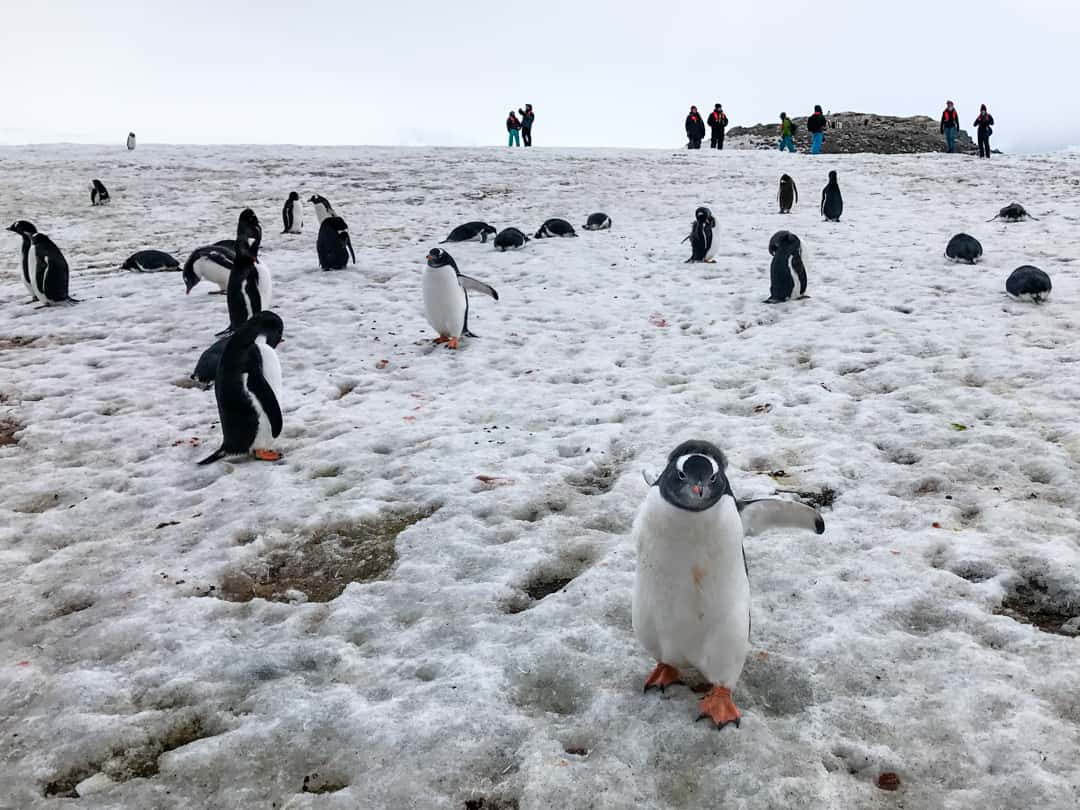
Penguins really are the top billing on a trip to Antarctica. Just remember the five metre rule: it’s for their safety, but ours too. Trust us, once you’ve seen how far penguins can project their poop, you’ll understand.
2. The Rest Of The Wildlife In Antarctica Is Amazing Too.
You’re standing on the deck of your Antarctic cruise ship taking in the magnificent scenery and looking out for tell-tale spray, when two humpback whales glide out of the blue and straight towards you.
These majestic giants of the sea are naturally curious about the world around them, and if you’re going to Antarctica, it’s not unusual to have close encounters of the cetacean kind. The best time for seeing whales in Antarctica is February and March.
On our Antarctic cruise we spotted whales from the ship and from our zodiacs just about every day, including a couple of sleek but shy minke whales.
We didn’t luck out with orca alas, but friends who visited Antarctica the week before did. It’s a game of chance, but every wildlife sighting here is exciting.
Our favourite encounter was with two inquisitive humpbacks that circled our ship for around an hour, at one point hanging out at the stern and spy-hopping to check us out face to face. They were so close we could have shared tea and a chat.
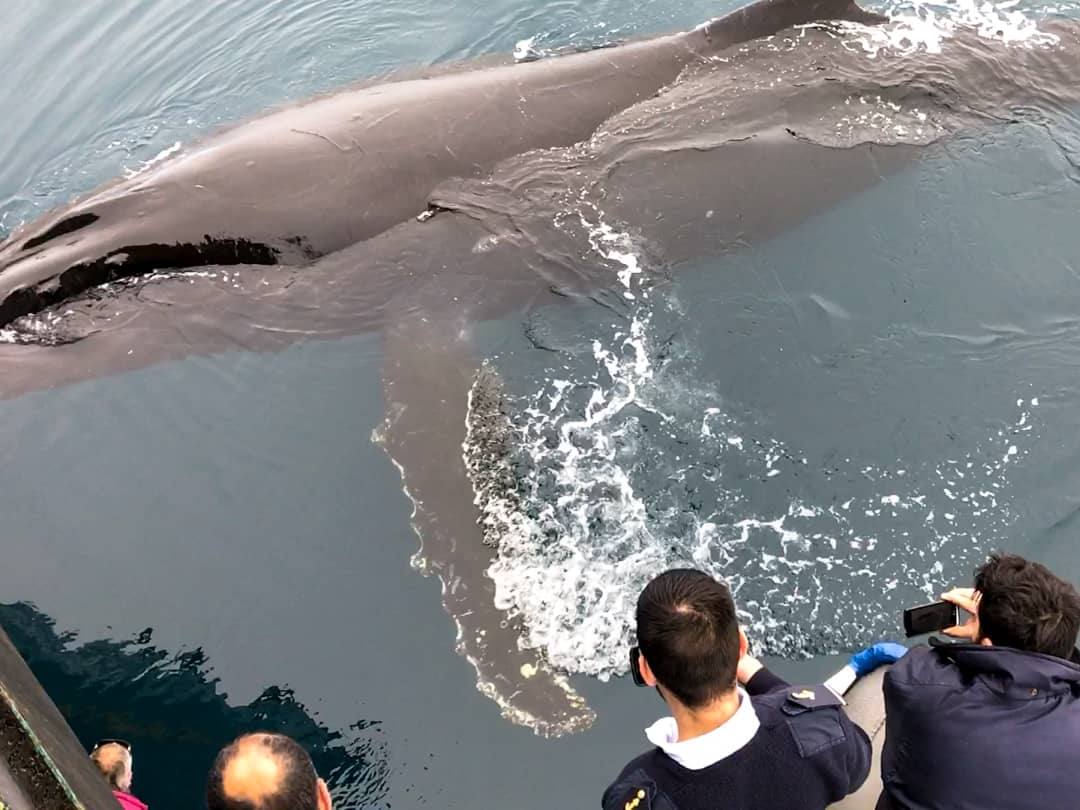
Another frequently encountered local resident is the Antarctic fur seal. These agile characters often kept us company on our daily excursions, zipping about the zodiac boats, and lazing about at many of the landing sites.
At Whalers Bay on Deception Island, we walked (cautiously) around hundreds of juvenile males, some play-fighting, others jostling aggressively for position in the seal hierarchy.
Want to know more about Antarctica’s wildlife? We get up close and personal in this article.
Chubby Weddell and crabeater seals also appeared from time to time on floating platforms of ice. We were beyond thrilled though when we finally spotted Antarctica’s apex predator: the fearsome leopard seal. She was napping un-fearsomely on a berg.
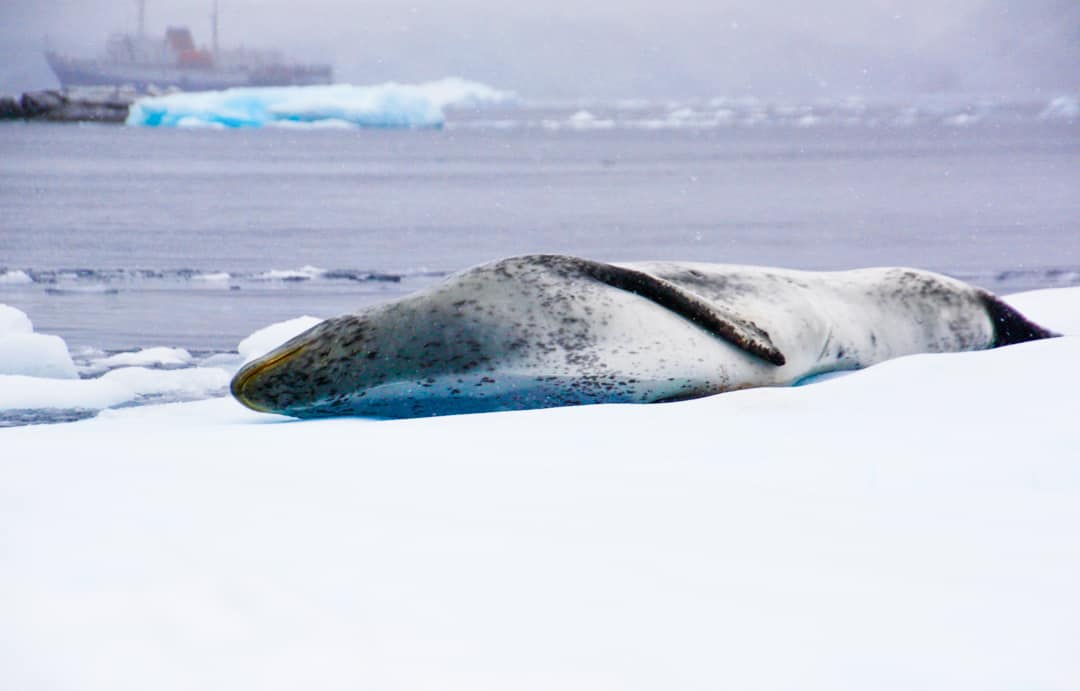
While the penguin is the best known of Antarctica’s many bird species, the twitchers on our voyage were also kept busy with sightings of wandering albatross, skua, petrels, cormorants, terns, sheathbills and more.
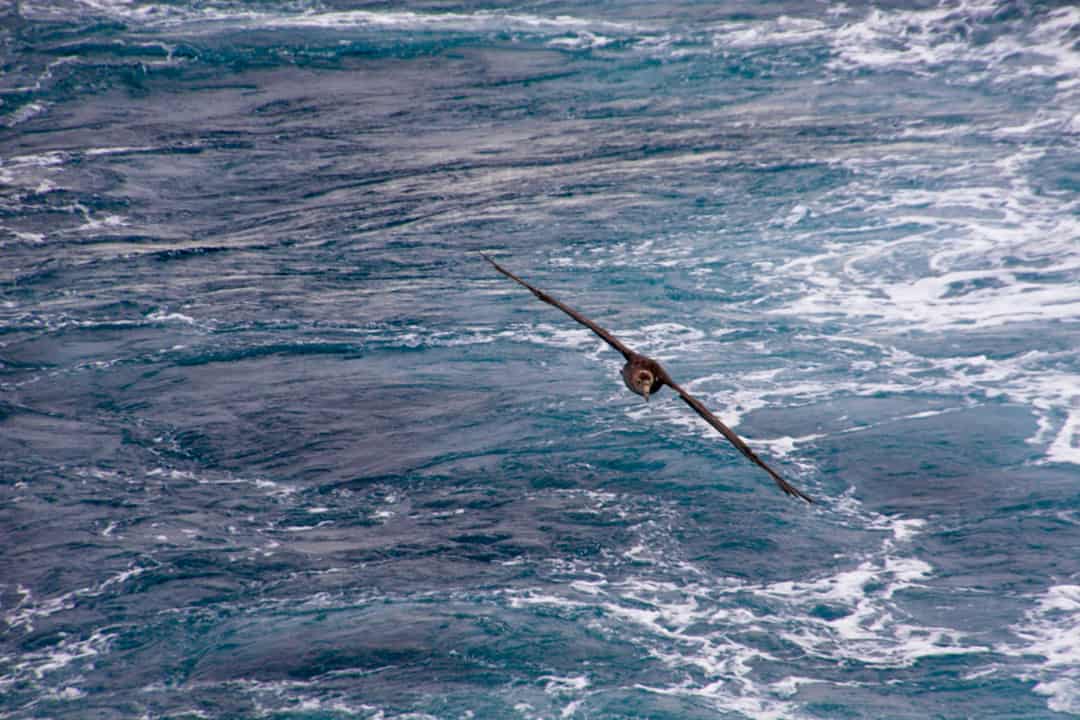
3. Antarctic Landscapes Are Mindblowing.
There’s no better reason for going to Antarctica (apart from penguins, obv), than to see one of the world’s last truly untouched wilderness with your own eyes.
‘Jaw-droppingly beautiful’ is often how you’ll hear Antarctica described, but even that doesn’t really come close to capturing the pristine beauty of this immense landscape of snow and ice.
Throughout our Antarctic journey, we often found ourselves on deck, spellbound by the scenery until our fingers went numb and the chill began to seep through our clothes, forcing us back inside for a hot drink, or something stronger.
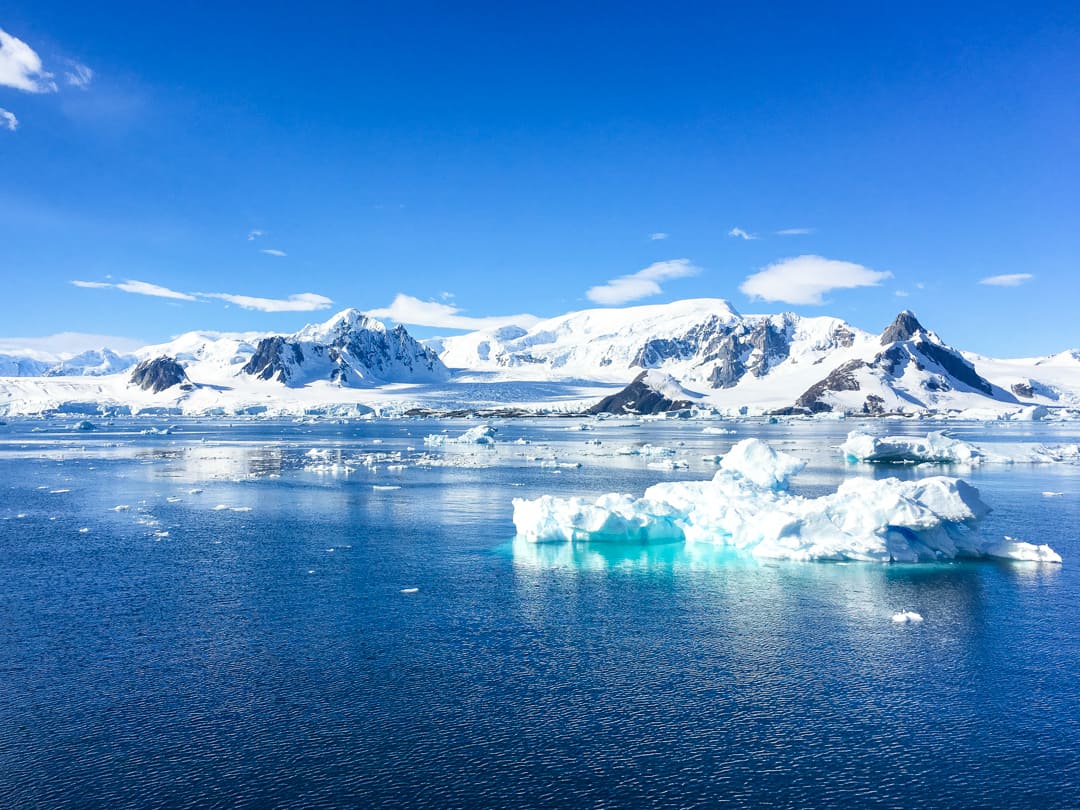
Every day of our Antarctic cruise revealed surprising new vistas, from vast bays thick with sea ice, soaring snow-etched mountains, and a huge, flooded volcano caldera to bright blue marshmallow glaciers, black sand beaches, and bewitching but deadly icebergs.
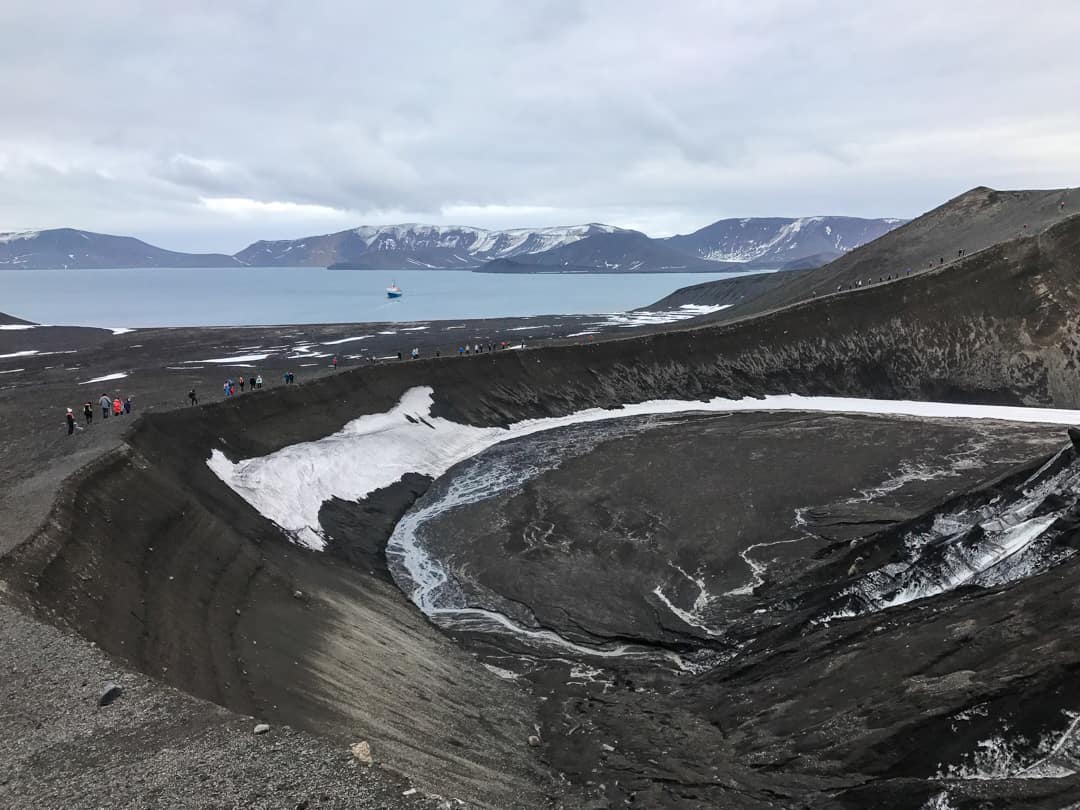
4. You’ll Discover A Past Frozen In Time
When James Cook crossed the Antarctic Circle in 1773, he strayed tantalisingly close to Antarctica, just 150 miles away. In 1820, a number of expeditions claimed to have seen the ice shelf and the continent.
However, it’s American Captain John Davis who is largely credited with the first actual landing on the Antarctic mainland in 1821.
From that point on, right up until the signing of the Antarctic Treaty in 1959, Antarctica became a place of both exploration and exploitation as various countries jostled for supremacy and control of the continent, its waters and its untapped resources.
To visit Antarctica today is an opportunity to see the remnants of this often harsh and brutal history first hand.
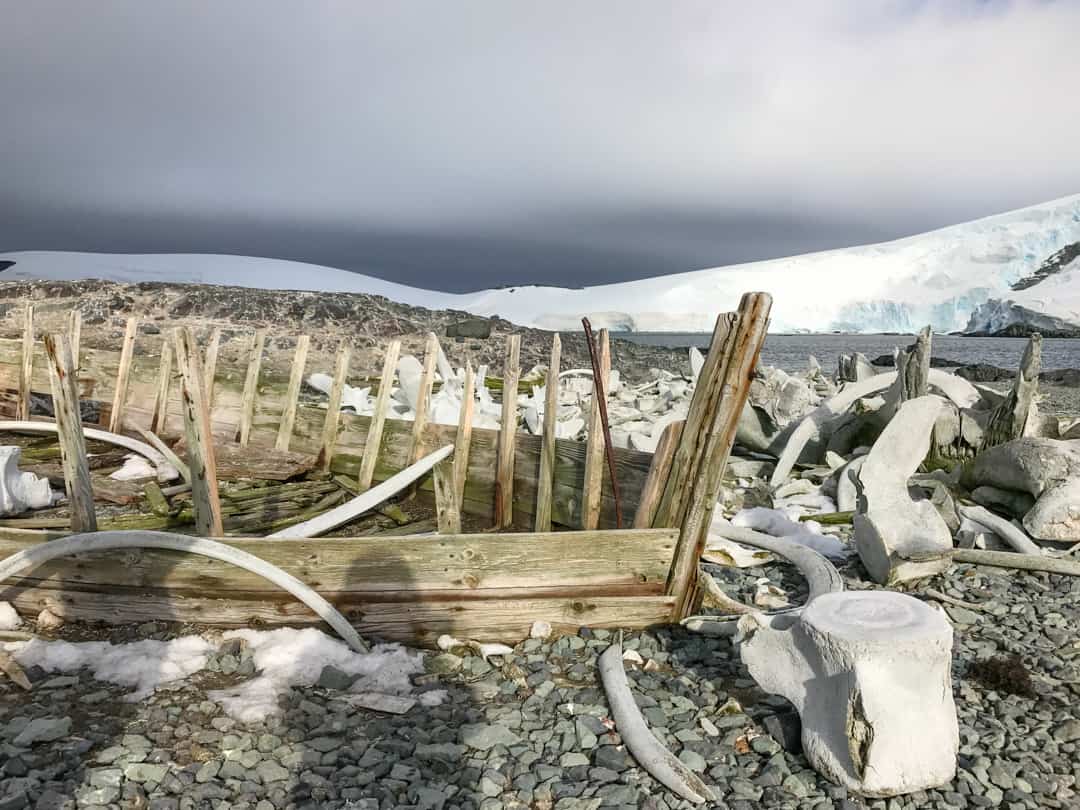
Foyn Harbour was one of many historic places to visit in Antarctica that made it onto our cruise itinerary; a moody place turned even more grim and forbidding by a sudden snow flurry.
There, we pondered the rusting hulk of the Norwegian whaling factory ship Governoren, abandoned and run aground after a fire below deck in 1915.
The fire took place during a party to celebrate a successful whaling season, and while the crew of 85 all managed to escape, we can only imagine how they must have felt, standing on the ice watching their ship burn, wondering if they would be rescued before they froze to death.
Fortunately for them, their story had a happy ending; they were rescued by another whaling ship.
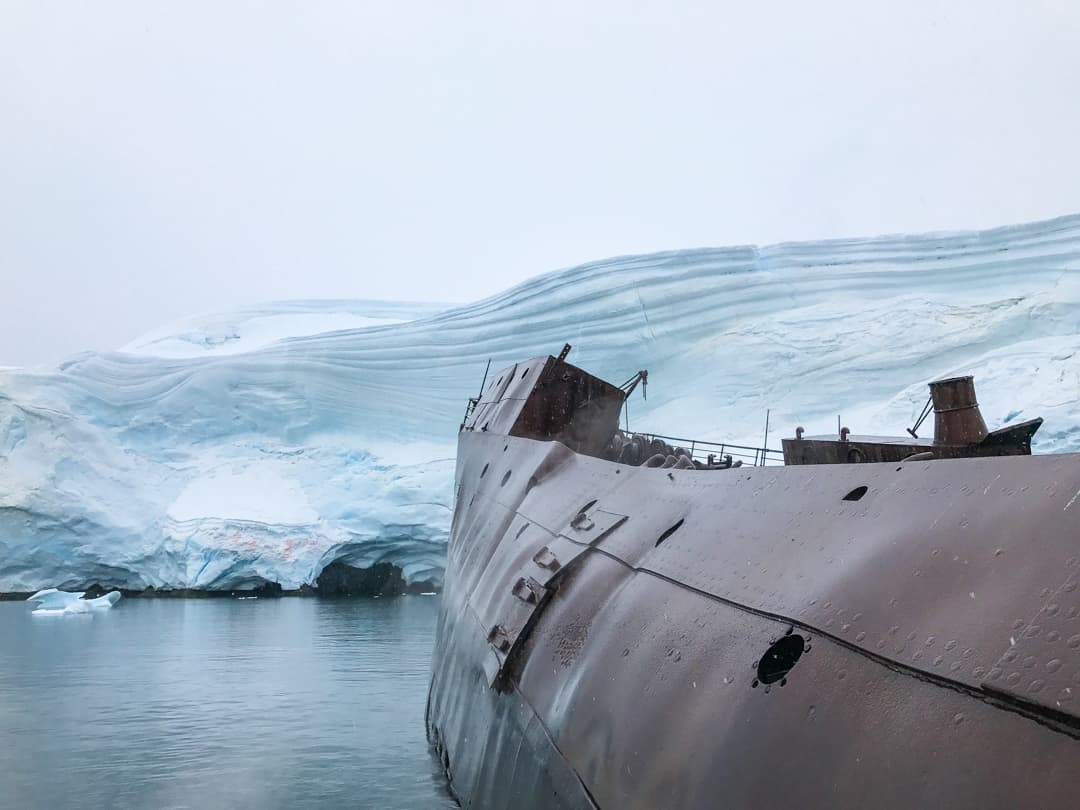
Whalers Bay is another fascinating historic site in the South Shetlands. Located on Deception Island, an active volcano that last erupted in 1969, the bay is ironically one of the safest harbours in the region.
In 1912 a large scale whaling station was built here, operating until 1931, when it was abandoned following a crash in whale oil prices: a serious loss for the industry, but a lastminute reprieve for the diminishing whale populations in the southern ocean.
Today, the haunting – and some say haunted – relics of the whaling station are overrun by the fur seals once hunted here to near extinction, another irony in the story of Whalers Bay.
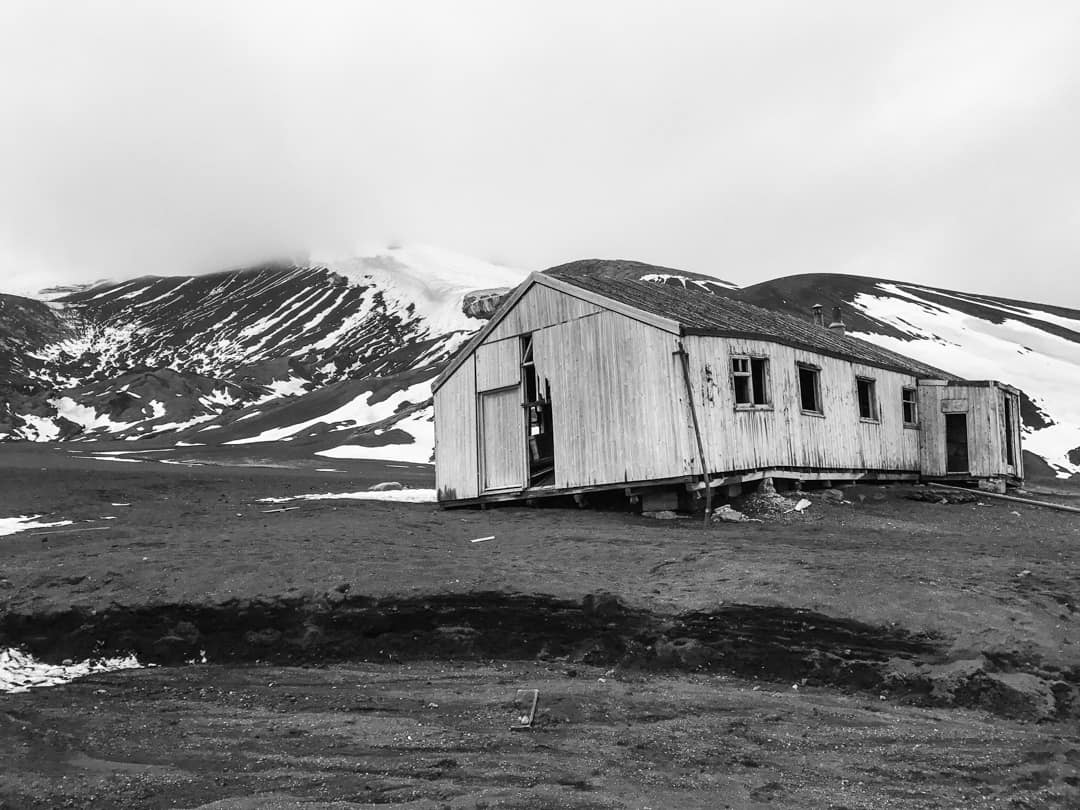
5. The Glaciers And Icebergs In Antarctica Are Epic.
Antarctica not only has the largest glacier in the world (Lambert-Fisher Glacier is around 400 kilometres long and up to 100 kilometres wide), it’s also home to more than 500 other glaciers, give or take a few.
There were times during our Antarctic journey when we were literally surrounded by glaciers.
At one of the most beautiful places we’ve ever been, Paradise Bay, we watched from our zodiac as a huge shard of ice calved from the wall of the glacier in front of us.
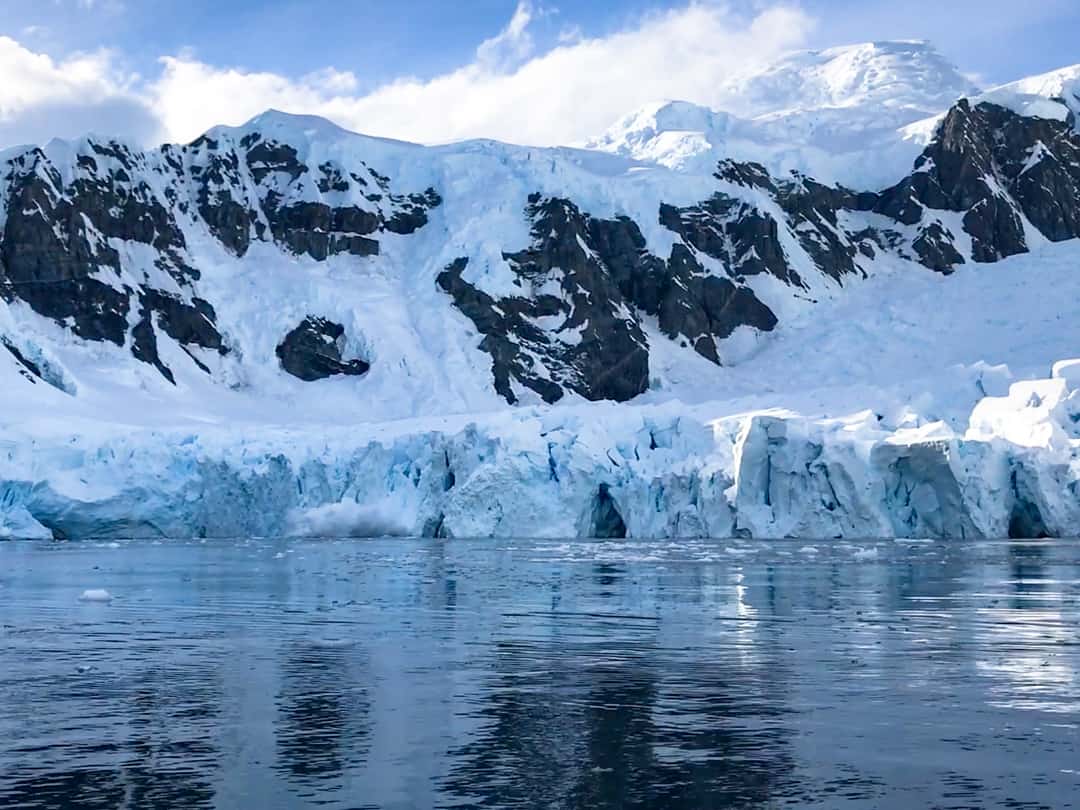
With so many glaciers churning ice into the water, and a vast sheet of ice edging the continent, icebergs are literally everywhere.
These floating ice sculptures may be a source of great excitement and wonder for anyone going to Antarctica (they certainly were for us), but for the highly experienced captains and crews of Antarctic ships, they’re a constant test of vigilance and skill.
We saw icebergs with their own plunge pools, others with soaring, cathedral archways, and some as tall as multi-storey buildings, all of them prisms of icy blue hues. Many bergs were ride-ons for lazy seals, resting penguins or sea birds. We never tired of seeing them.
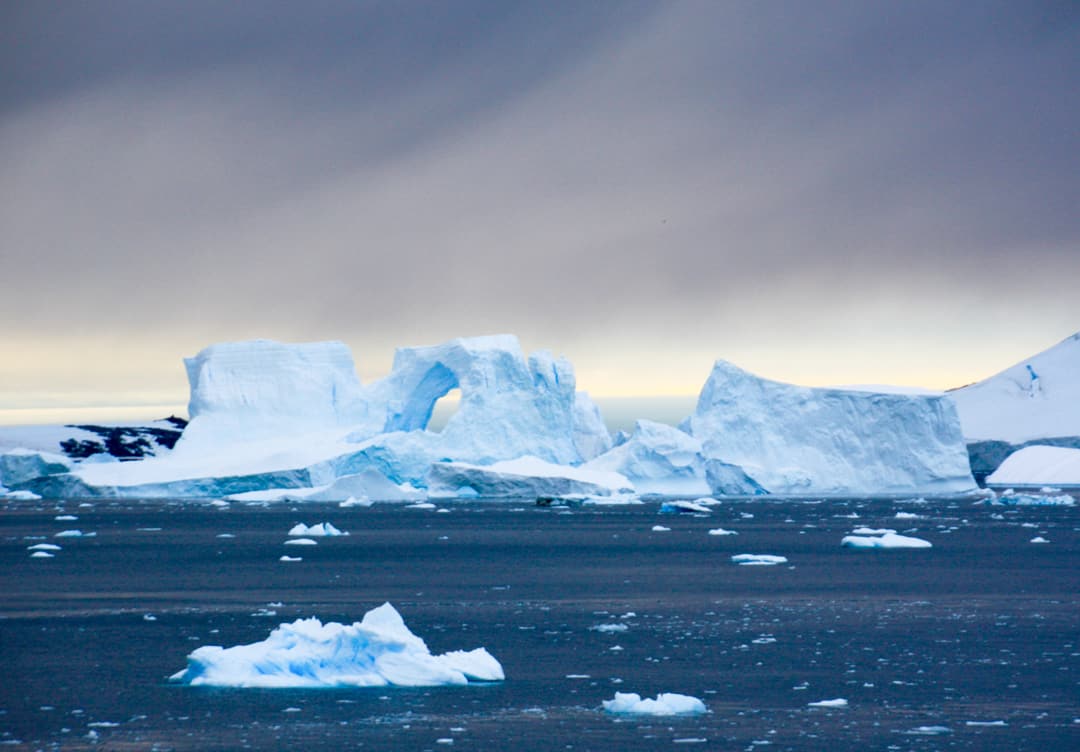
6. You’ll Meet People Who Actually Live In Antarctica.
With around 30 countries operating more than 80 research stations around the continent, Antarctica is a major hub for scientific research in a range of fields from biology, glaciology, physics and meteorology, to seismology, ecology and a host of other ‘ologies’.
Antarctic expedition ships often visit research stations as part of their cruise itineraries. We stopped at several bases during our voyage, meeting the scientists, naval crews and staff who live in them.
By March, Antarctica’s summer stations, like the Argentine Base Brown, are closing for the winter.
Check out our article on the best time to visit Antarctica and everything else you need to know to go.
While we didn’t get to tour this particular station, we wandered around it and heard stories about the resilience that’s required to live in Antarctica.
Take the tale of one of Brown’s early resident doctors. On learning his one year placement was being extended for another year, he promptly burned the place down in a desperate attempt to get out. No one was hurt, but the doctor was transferred to another base to serve out his deployment.
But maybe that’s the reason the rebuilt station only opens for the summer these days.
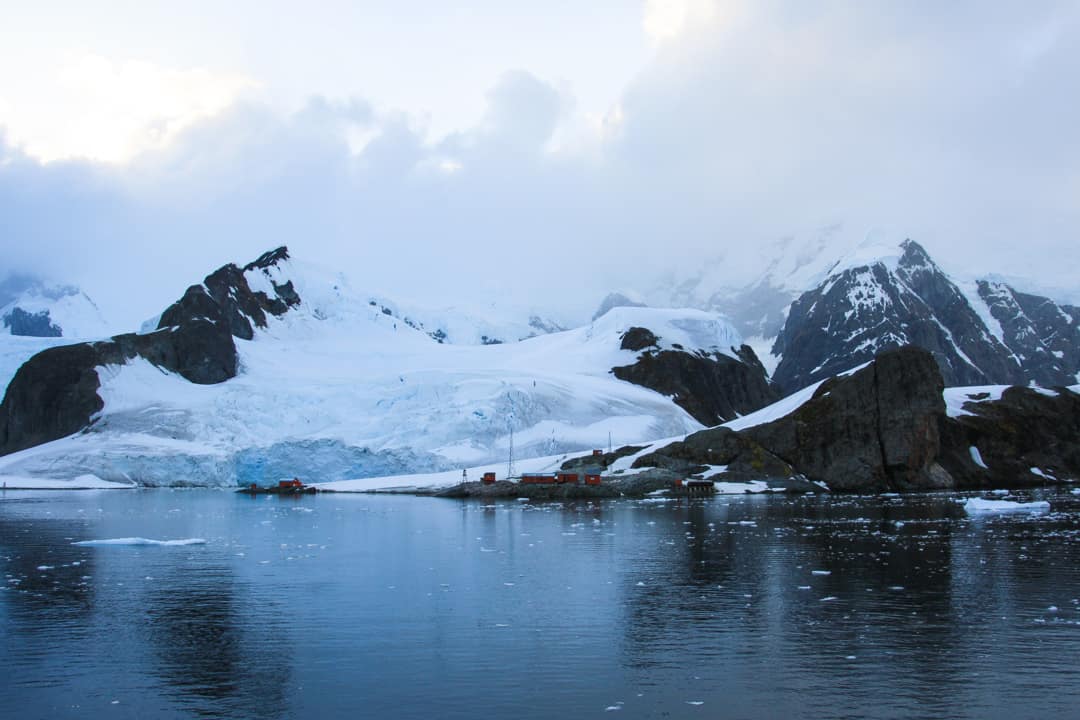
The Ukranian Vernadsky research station, by contrast, is a year-round base. Once winter arrives, the residents can look forward to months of long nights and lows of -10 degrees.
The Antarctic peninsula is much milder than other parts of the continent, although these guys have recorded lows of more than -40 degrees.
Wisely, the scientists at Vernadsky have deployed their expertise to distilling vodka on site. We sampled shots of the moonshine in their very own little bar, the world’s most southerly drinking establishment.
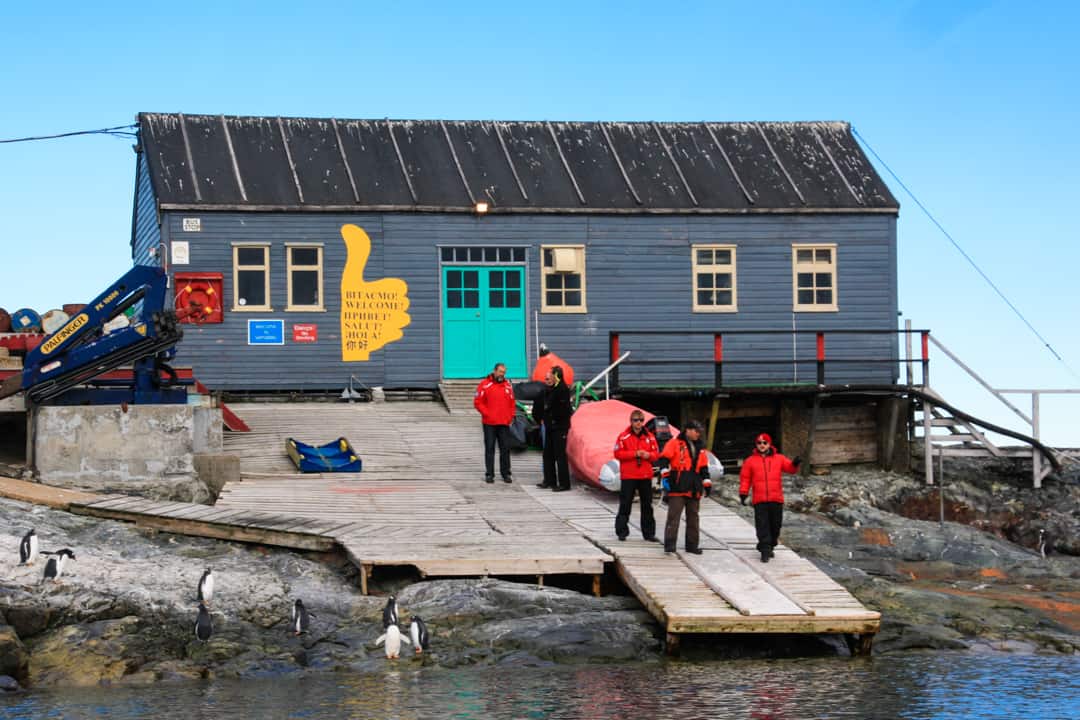
7. You Learn From The Experts.
While an Antarctic expedition cruise is all about getting out and seeing all the magnificent continent has to offer, we were surprised by just how much we learned along the way.
Throughout the trip, our program included fascinating lectures on various polar topics, from our professional expedition team of scientists, naturalists and biologists.
We learnt about the history of Antarctica, and it’s flora and fauna, including penguins (of course!), whales, seals and plant species.
Our lectures also covered the Antarctic Treaty, the politics of the region, and a range of subjects spanning geology, ozone and the atmosphere, climate change and Antarctic stations.
We had access to a library of books about Antarctica as well, so we could investigate topics further, or look up a bird or whale species we’d spotted.
Lectures are entirely optional but in our experience, if you’re going to Antarctica, the opportunity to gain real insights and understanding about the destination you’re travelling so far to see, is one of the standout perks of the trip.
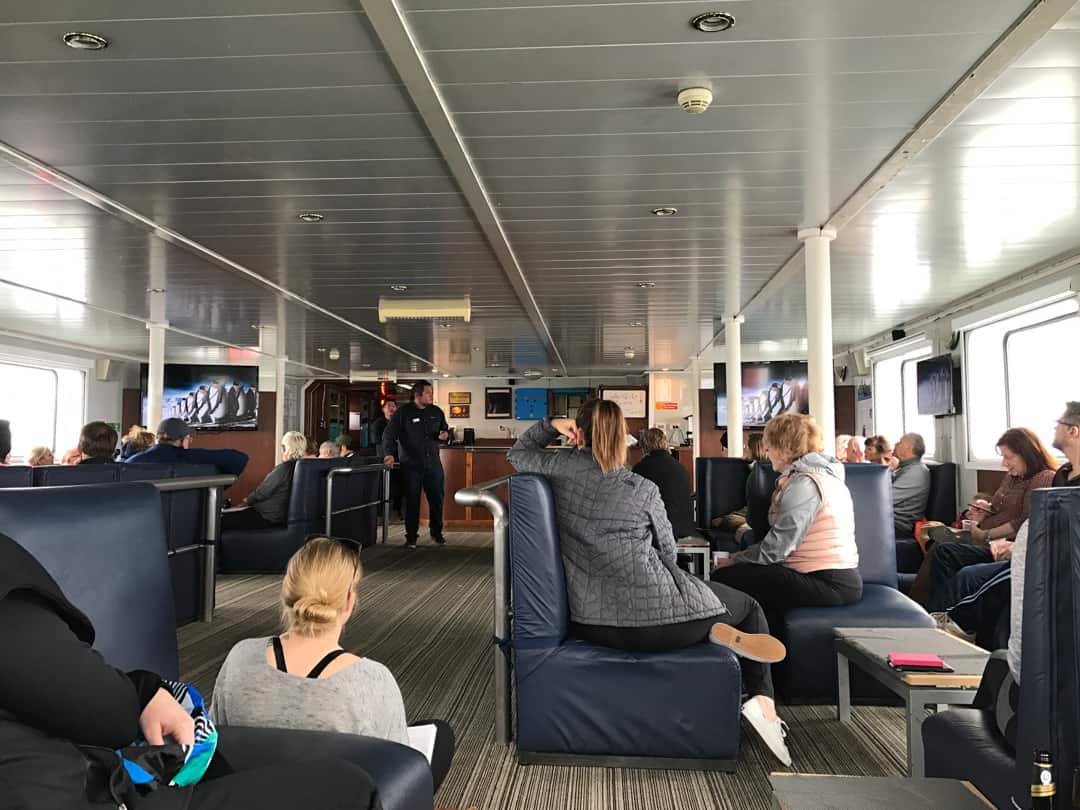
8. The Solitude Is Real.
In a world of seven billion people, it’s a rare thing to look out over a vast expanse of land without a trace of humanity on it.
There are no car horns, police sirens, loud music or traffic. No crowds, no queues, no rubbish and no pollution.
Just pristine views. Complete quiet.
Despite around 35,000 people visiting Antarctica each season, cruises are managed with environmental protections at the forefront. Itineraries and landings are coordinated to limit the pressures on the land, water and wildlife.
The result is that on expedition cruises at least, you rarely see other ships, if at all.
Head to Antarctica aboard a small ship, find a quiet spot away from your cruise compatriots on the boat or on land….and enjoy real silence and solitude. In this day and age, it’s a profound experience.
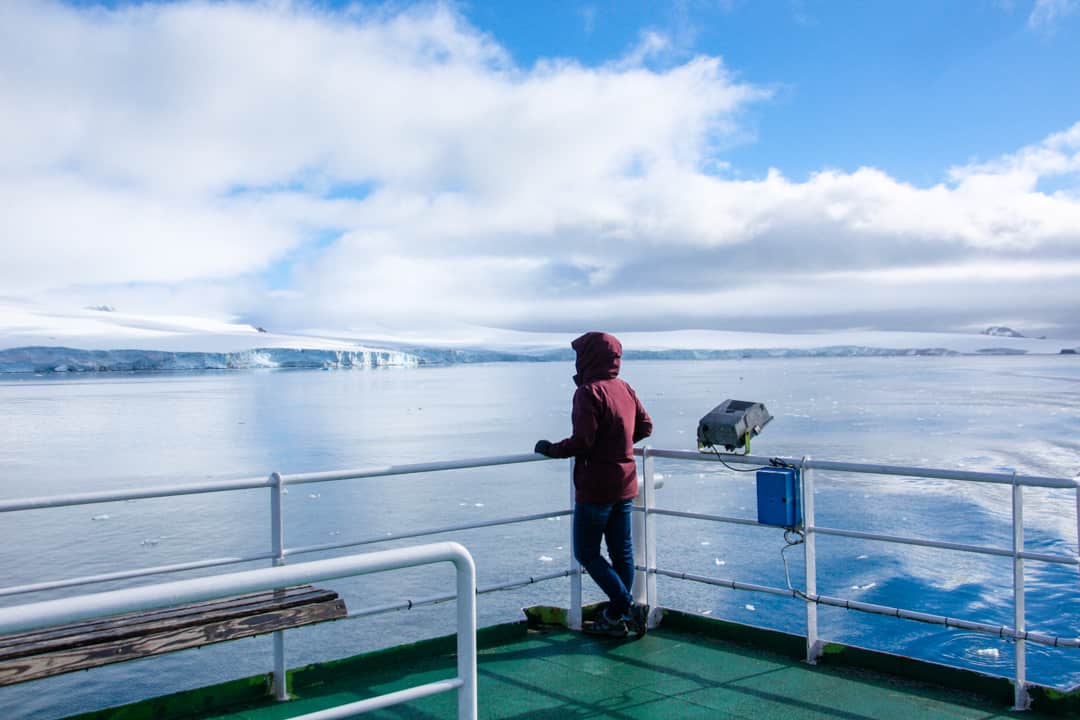
What does it feel like to arrive in this otherworldly place? Here’s our take on the experience.
9. You’ll Have Serious Bragging Rights Just Crossing The Drake.
It’s said to be the world’s roughest sea crossing, so making the journey across the Drake Passage en route to Antarctica (and back again) is an achievement all its own.
Aside from cost, the Drake is also one of the biggest stumbling blocks for people considering a trip to Antarctica.
What do you need to know to choose the best Antarctica cruise for you? We’ve captured our tips and insights in this article.
At the end of the day, whether you have the dreaded ‘Drake Shake’, or the cruisey ‘Drake Lake’ comes down to pure luck.
We had the lake in both directions and we could almost sense the crew – who travel to and from Antarctica a dozen or more times over the season – doing cartwheels of joy in their cabins.
Lying in our tightly-tucked bunks at night though, rolling from side to side, we were glad for the railings that stopped us pitching right off the bed. Even with the ‘lake’.
And despite the captain telling us it was a 1 out of 10 on the Drake severity scale, we were thankful to be dosed up on anti-seasickness tablets.
But don’t let the Drake put you off going to Antarctica. The captains and crews on these ships are expert at crossing the passage in all weather. It’s just one more adventure on the epic Antarctic journey.
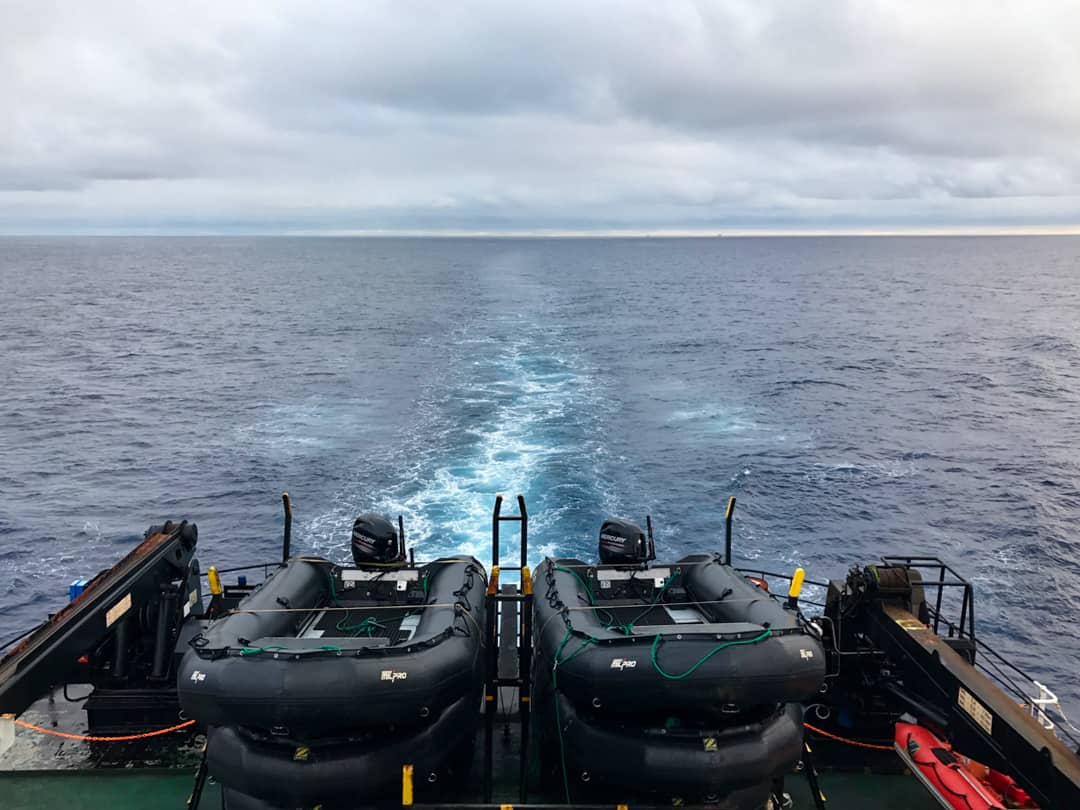
10. There’s Simply No Place On Earth Like Antarctica.
Antarctica is a vast, rugged yet incredibly fragile wilderness with a unique ecosystem of plants and animals specially adapted to survive in one of the world’s harshest environments.
Antarctica belongs to no one and to every one. Under the Antarctic Treaty, a raft of measures and resolutions are in place to protect the continent, its waters and the life in both. It’s our responsibility to ensure those protections last forever.
To visit Antarctica, and discover for yourself the incomparable beauty and diversity of one of our last pristine and unspoiled environments, is an experience you’ll have nowhere else.
There’s simply no other place like it. Going to Antarctica is, without doubt, the adventure of a lifetime.
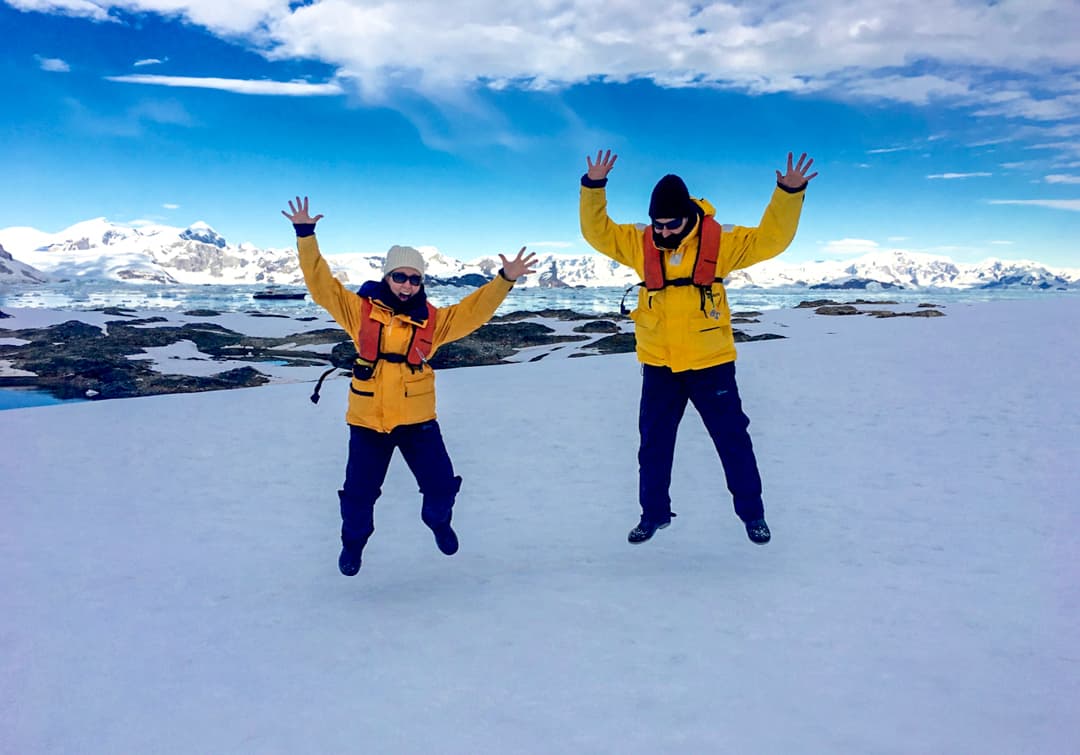
We travelled to Antarctica in March 2017 on a 10-day cruise with Antarrply Expeditions, aboard the expedition ship, the MV Ushuaia. We paid our own way.
Are you planning on going to Antarctica? Or have you been? Let us know what you loved most, or ask us any questions you have in the comments below.

Simply put, Antarctica is other-worldly you may as well be on a another planet. The raw natural wonder and the light was a new experience. Who knew there are 100 different types and names for ice?
We were very lucky with the weather. We were the first from our particular tour group to land south of the Antarctic Circle.
Unforgettable, marvelous, dangerous, and breathtaking.
Don’t let the fear of the Drake Passage stop you. Embrace the challenge.
Couldn’t have put it better ourselves Ed, a truly magnificent place that certainly exceeded all our expectations.
I hope we get back there someday.
Cheers
John and Dan
Wonderful article! Having recently experienced Antarctica, you really nailed what makes this continent so incredibly special – and did it so eloquently. Thank you! And, I’m so glad you had an easy Drake Passage – mine was fairly rough (but the Scopolamine patch worked great)!
Cheers Janet! So pleased you enjoyed it, and that it’s hit the mark for someone who’s also had the wonderful opportunity to experience it. You had some Drake Shake? We’re a little envious actually….but then, maybe we’d feel differently if we’d actually had the experience. Glad to hear the patch worked though!:)